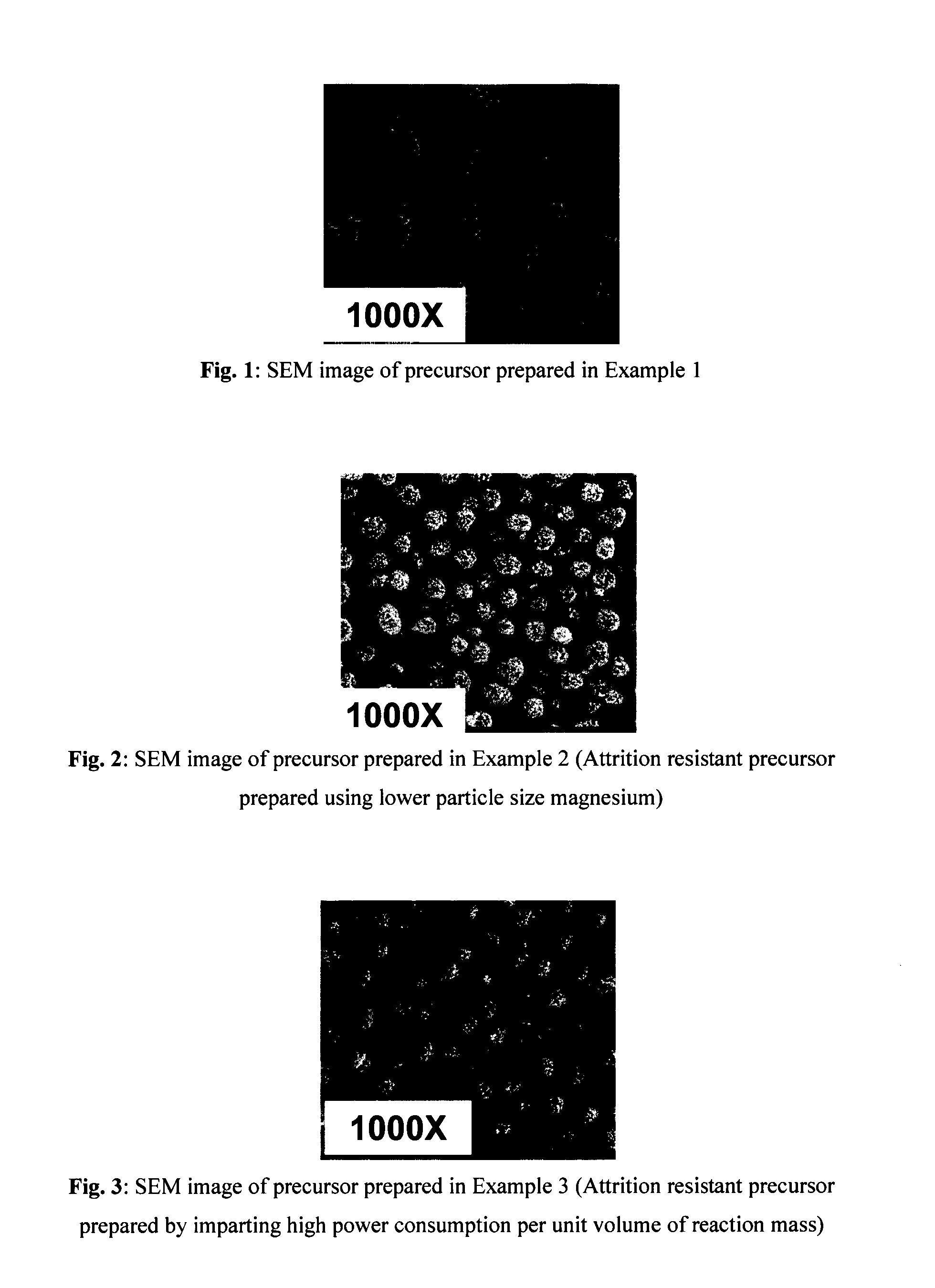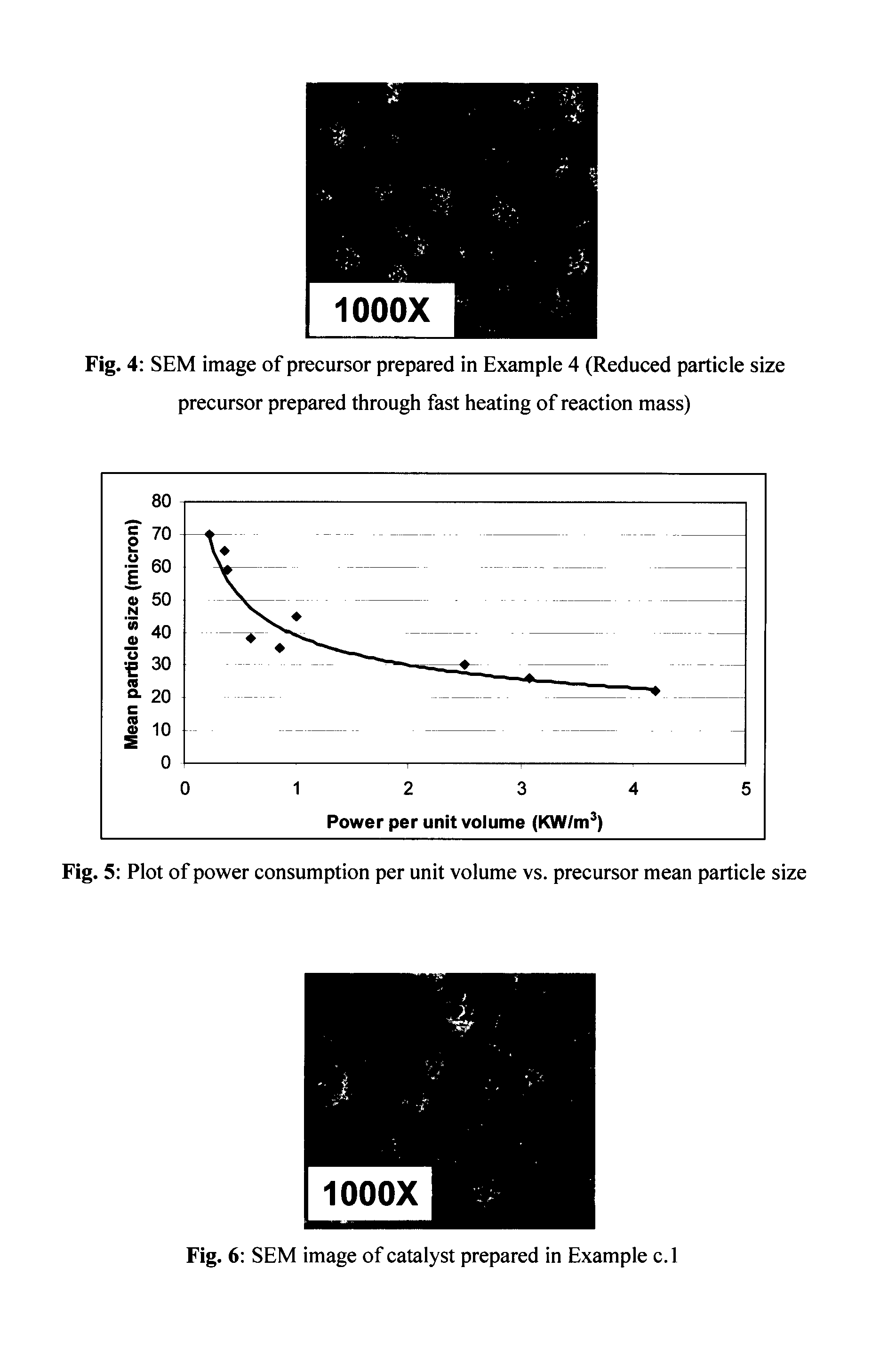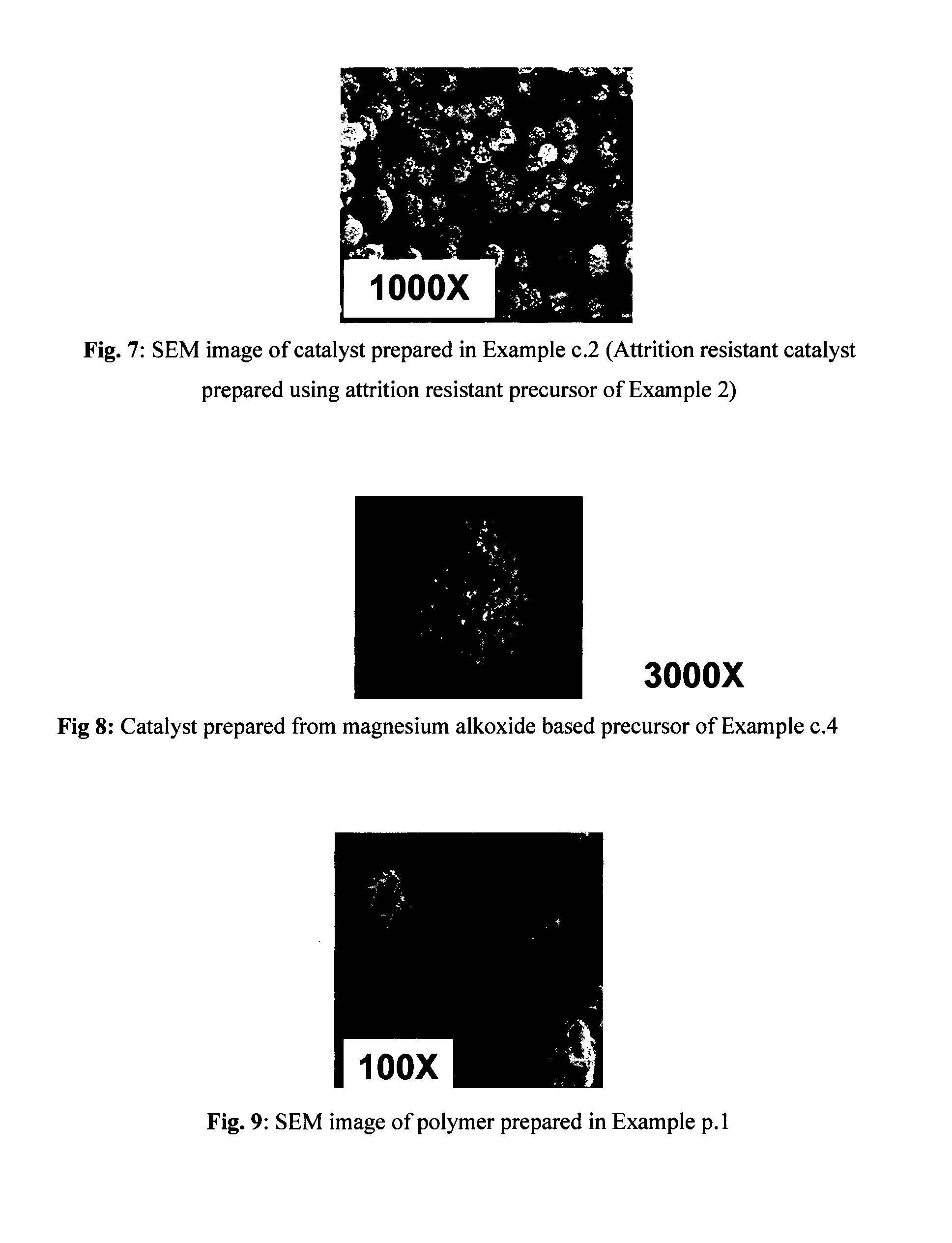Attrition resistant catalyst system for manufacture of polyolefins
- Summary
- Abstract
- Description
- Claims
- Application Information
AI Technical Summary
Benefits of technology
Problems solved by technology
Method used
Image
Examples
example 1
Synthesis of Attrition Resistant Precursor by Using Low Particle Size Magnesium
[0063]Magnesium powder (5.5 kg) having mean particle size of 125 micron was added to mixture of ethanol and methanol (125 L) in presence of initiator iodine (150 gm) at 40° C. with continued stirring. The agitator rpm was kept at 350 and it is corresponding to a power consumption of 0.86 KW / m3. Making use of reaction exothermicity and external temperature control, reaction was conducted in a step-wise manner, heating first in the range to 40° C. to 60° C. for a period of 1 hrs and then in the range of 60° C. to 80° C. for a period of 2 hour, further by maintaining reaction temperature at 80° C. for a period of 7 hours. The vapours of the mixture produced during the reaction were condensed in an overhead condenser. The hydrogen gas produced during the reaction was vented off and the mixture of alcohols left after the reaction was removed by filtration. The filtrate was reused for the synthesis. A wet cake ...
example 2
Comparative Synthesis of Precursor
[0064]Magnesium powder (5.5 kg) having mean particle size of 250 microns was added to mixture of ethanol and methanol (125 L) in presence of initiator iodine (150 μm) at 40° C. with continued stirring. The agitator rpm was kept at 350 and it is corresponding to a power consumption of 0.86 KW / m3. Making use of reaction exothermicity and external temperature control, reaction was conducted in a step-wise manner, heating first in the range to 40° C. to 60° C. for a period of 1 hrs and then in the range of 60° C. to 80° C. for a period of 2 hour, further by maintaining reaction temperature at 80° C. for a period of 7 hours. The vapours of the mixture produced during the reaction were condensed in an overhead condenser. The hydrogen gas produced during the reaction was vented off and the mixture of alcohols left after the reaction was removed by filtration. The filtrate was reused for the synthesis. A wet cake was obtained after removal of the filtrate. ...
example 3
Synthesis of Attrition Resistant Precursor by Inducing High Shear in the Reaction Mass Through Higher Power Input to the System
[0065]Magnesium powder (5.5 kg) having mean particle size of 250 micron was added to mixture of ethanol and methanol (125 L) in presence of initiator iodine (150 μm) at 40° C. with continued stirring. The agitator rpm was kept at 600 and it is corresponding to a power consumption of 4.2 KW / m3. As the power consumption increases the shear in the reaction mass will also increase which causes reduction in precursor particle size. Making use of reaction exothermicity and external temperature control, reaction was conducted in a step-wise manner, heating first in the range to 40° C. to 60° C. for a period of 1 hrs and then in the range of 60° C. to 80° C. for a period of 2 hour, further by maintaining reaction temperature at 80° C. for a period of 7 hours. Vapours of the mixture produced during the reaction were condensed in an overhead condenser. Hydrogen gas pr...
PUM
| Property | Measurement | Unit |
|---|---|---|
| Temperature | aaaaa | aaaaa |
| Temperature | aaaaa | aaaaa |
| Temperature | aaaaa | aaaaa |
Abstract
Description
Claims
Application Information
 Login to View More
Login to View More - R&D Engineer
- R&D Manager
- IP Professional
- Industry Leading Data Capabilities
- Powerful AI technology
- Patent DNA Extraction
Browse by: Latest US Patents, China's latest patents, Technical Efficacy Thesaurus, Application Domain, Technology Topic, Popular Technical Reports.
© 2024 PatSnap. All rights reserved.Legal|Privacy policy|Modern Slavery Act Transparency Statement|Sitemap|About US| Contact US: help@patsnap.com










